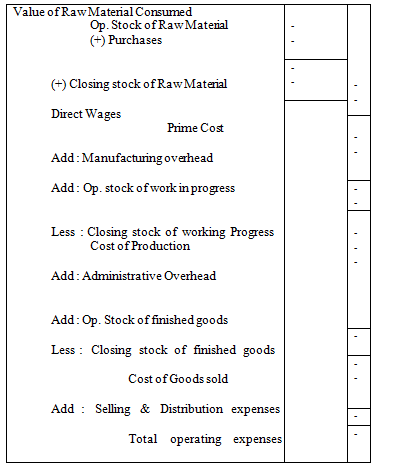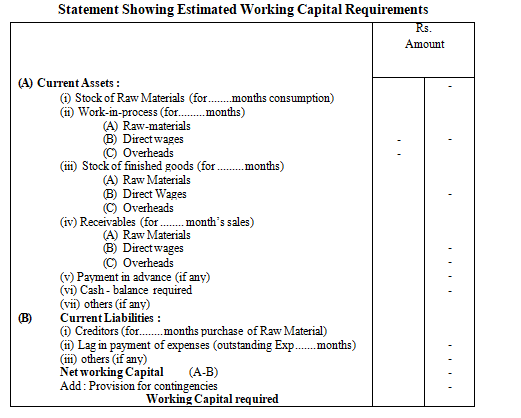Question based on ISTD Assignment Solution and other course
Answer:
There are following methods for estimation of working capital :
- Percentage of Sales Method: Relationship between sales and working capital is calculated over the year, if it is found stable then it is taken as a base for determining working capital. In this method, percentage of each item of working capital is determined. On the basis of this relationship value of each component of working capital is calculated and then these estimated amount is sum up for final result.
- Regression Analysis Method: It is a statistical technique in which working capital requirements is calculated by using least square method. The relationship between sales and working capital is expressed by the following equation :
y = a + bx
| x | = | Sales (Independent variable) |
| y | = | Working Capital (Dependent variable) |
| a | = | Intercept |
| b | = | Slope of the time |
3. Operating Cycle Method :
In This Method following steps are for computation of working capital
1. Calculation of Operating Expenses :

- Calculation of Operating Cycle Period : Total number of days involved in the different stages of operation as materials storage period, conversion period, finished goods storage period, debtors collection period and creditors payments period. It is a total period involved in different stages of operations, which may be calculated as follows :
- Operating Cycle Period : Material storage period + conversion period + finished goods storage period + debtors collection period – creditors payment period. The calculation of each are as follows:
- Material Storage Period : It is the period for which raw material will remain in stores before they are issued for production. It is calculated by following formula :

- Conversion Period (Work-in-Progress Period) : The time which is taken in converting the raw material into finished goods. It is calculated by following formula :

Total production cost = value of R.M. consumed + Direct Wages+ Manufacturing expenses (excluding depreciation) + Op. stock of WIP – closing stock of WIP.
- Finished Goods Storage Period :It is the period for which goods have to remain in the go- down before sale taken place. It is calculated as follows :

Debtors Collection Period :It is the time lag in payments by debtors. It is calculated as follows:

Creditors Payment Period :It is the length of credit period available from trade creditors. It is calculated as follows :

- Number of Operating Cycles : The number of operating cycles in a year are determined by the following formula :

- Calculation of amount of Working Capital : The amount of actual Working Capital required is calculated by dividing the total operating expenses for the period by the number of operating cycles in that period. It is expressed as follows :

Alternatively working capital may be calculated as follows :

- Provision for Contingencies : The above calculation of working capital is based on estimates hence it may not be more accurate, Therefore, a provision for contingencies as required 5% or 10% may be added while ascertaining the final amount of estimated working capital.
- Forecasting Net Current Assets Method : It’s a method which is also recommended by Tondon Committee for computing working capital requirements. In this method of forecasting first of all, estimate of stock of raw materials, estimated value of work-in-process, estimated value of stock of finished goods, amount receivable from debtors and others and estimate minimum cash balance required to Meet-day-to- day payments required. Then also estimate outstanding payment for material, wages, and other adm. expenses. Now, difference between forecasted amount of current assets and current liabilities gives net working capital requirements of the firm. A flat percentage may be added in this amount of provision for contingencies.

5. Projected Balance Sheet Method: In this method, estimates of different assets (excluding cash) and liabilities are made, with taking into consideration the transcations in the ensuing period. After that, a “Pro- jected Balance Sheet is prepared on the basis of these forecasts. If the total of assets side is more than the total of liabilities side, then it indicates the deficiency of working capital which is to be collected by the management either taking bank loan or from other sources. On the contrary, if total of liabilities side is more then total of assets side than it represents cash balance available to the firm. Such surplus cash may invest outside the business or as management plans for it.
This method is not a popular method and calculations made through this method are not more scientific.
